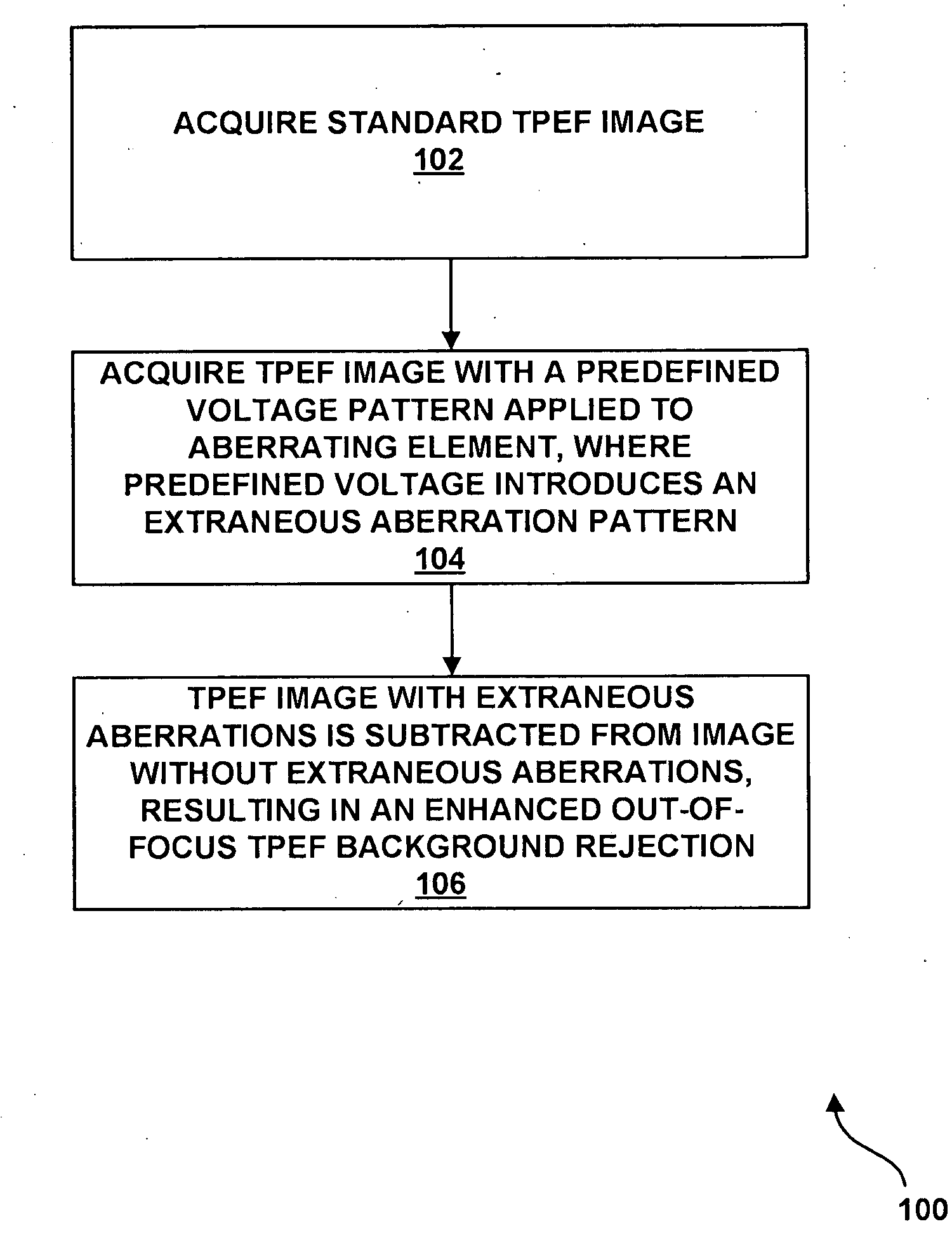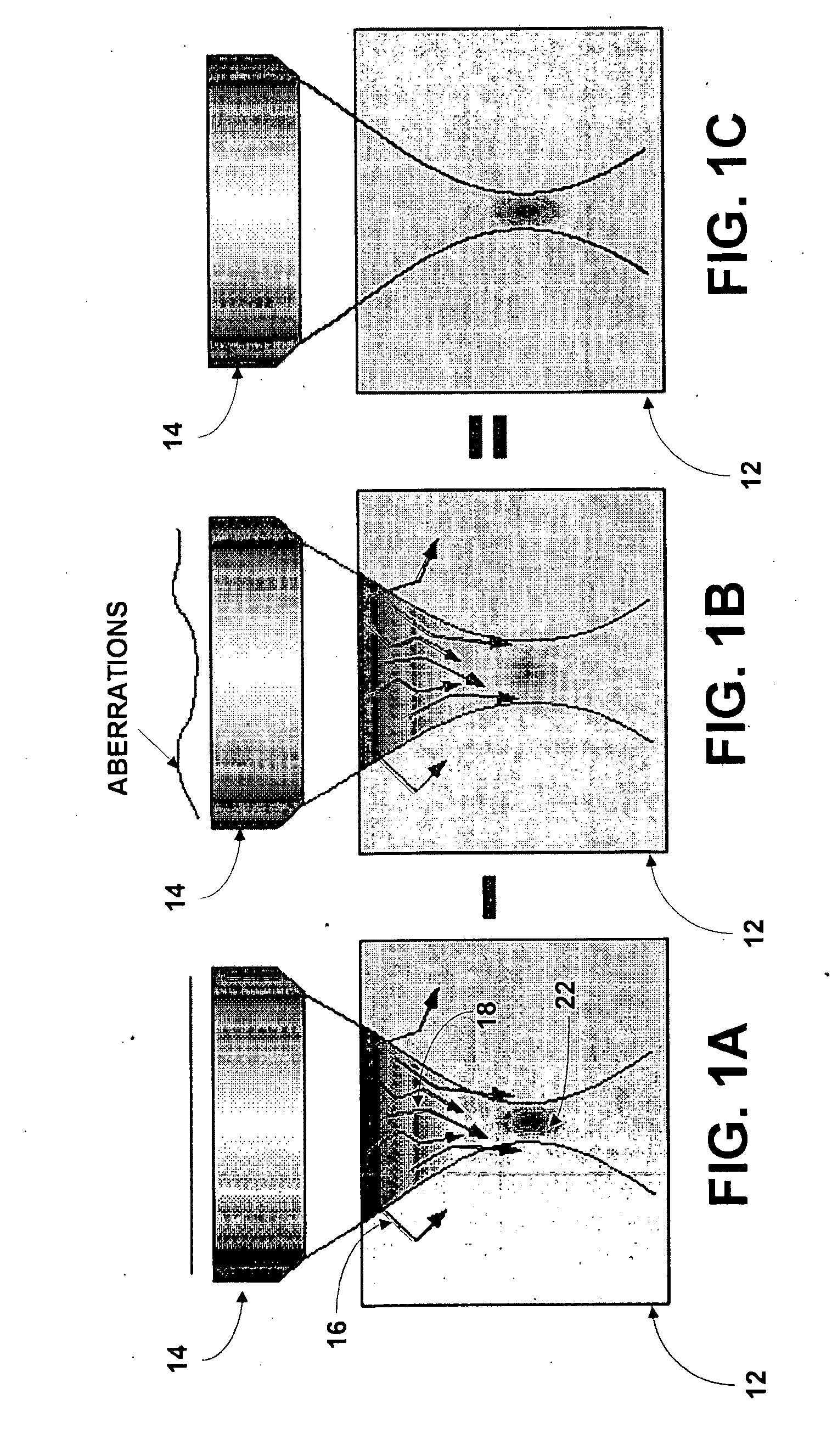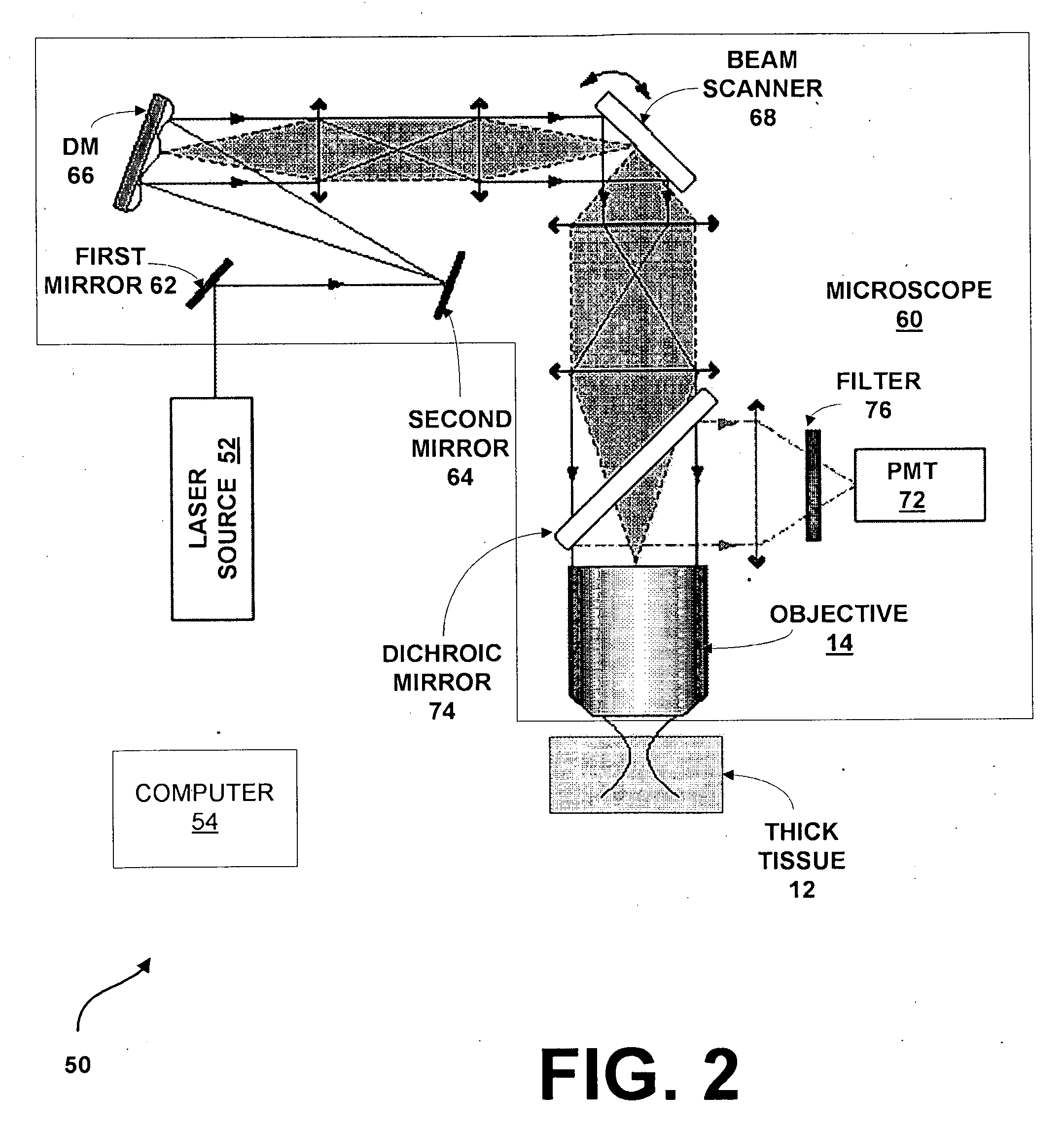System and method for providing enhanced background rejection in thick tissue with differential-aberration two-photon microscopy
- Summary
- Abstract
- Description
- Claims
- Application Information
AI Technical Summary
Benefits of technology
Problems solved by technology
Method used
Image
Examples
Embodiment Construction
[0020]The present system and method provides a robust technique that significantly alleviates limitations to depth penetration of TPEF microscopy arising from out-of-focus background generated either by superficial ballistic excitation or by snakelike scattered excitation. The present system and method uses an aberrating element, such as, but not limited to, a deformable mirror, in an excitation light path. While in most applications involving a deformable mirror, the deformable mirror is meant to improve beam focus by compensating for sample-induced aberrations, in the present system and method the deformable mirror is meant to do just the opposite. Instead, the deformable mirror is used in the present system and method to introduce extraneous spatial aberrations in an excitation beam path so as to purposefully degrade the quality of the ballistic light focus, thereby quenching the TPEF signal and associated focal spot.
[0021]While the TPEF signal can be severely quenched with extra...
PUM
 Login to View More
Login to View More Abstract
Description
Claims
Application Information
 Login to View More
Login to View More - R&D
- Intellectual Property
- Life Sciences
- Materials
- Tech Scout
- Unparalleled Data Quality
- Higher Quality Content
- 60% Fewer Hallucinations
Browse by: Latest US Patents, China's latest patents, Technical Efficacy Thesaurus, Application Domain, Technology Topic, Popular Technical Reports.
© 2025 PatSnap. All rights reserved.Legal|Privacy policy|Modern Slavery Act Transparency Statement|Sitemap|About US| Contact US: help@patsnap.com



